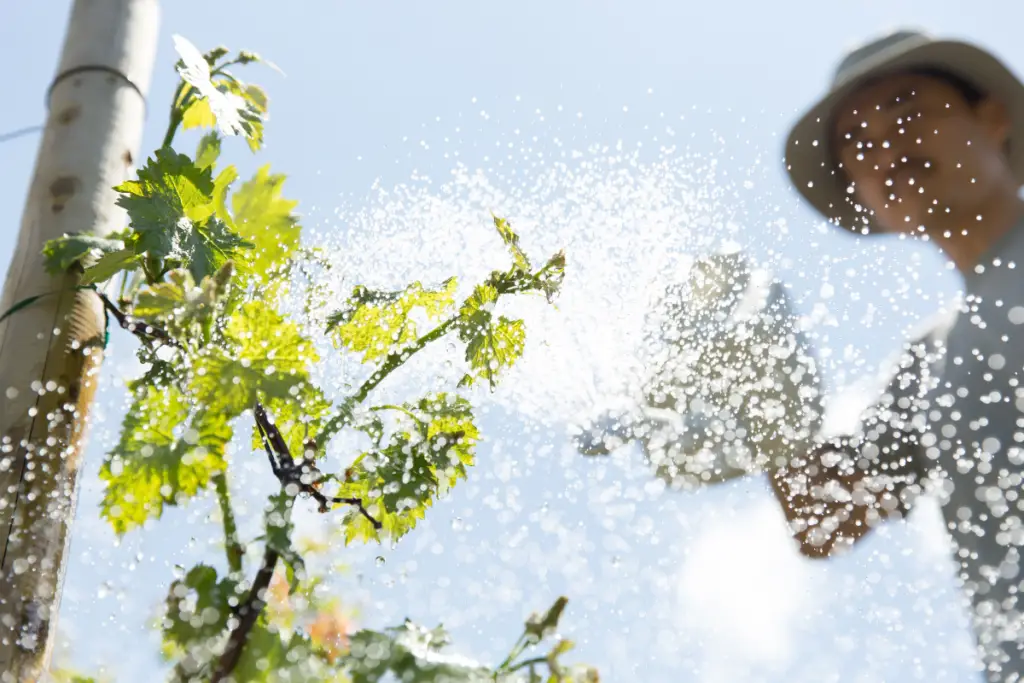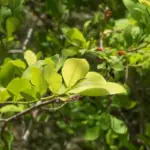Early signs of a male plant are important to recognize for cannabis growers who want to maximize their yields.
Male plants do not produce the potent buds that female plants do, and they can also pollinate female plants, leading to a reduction in the overall quality and quantity of the crop.
It is therefore essential to be able to identify male plants early on, before they have a chance to pollinate the females.
Fortunately, there are several early signs of a male plant that growers can look out for. According to Gardening Aid, male plants typically display their sex three weeks prior to female plants.
This means that growers should be checking their plants from July to September to identify any male plants.
Weedmaps notes that young cannabis plants first begin to demonstrate signs of gender, or pre-flowers, a month after germination while the plant is still in the vegetative stage.
These pre-flowers can appear as soon as four weeks after germination. However, it can take up to six weeks before the male pre-flowers are distinguishable from the female pre-flowers.

Table of Contents
What is a Male Plant?
Definition of a Male Plant
A male plant is a type of plant that produces pollen. It is one of the two sexes of plants, the other being female.
Male plants are necessary for pollination, which is the process of transferring pollen from the male plant to the female plant. This process is essential for the reproduction of plants.
Male plants have distinct characteristics that differentiate them from female plants. One of the most significant differences is that male plants do not produce buds or flowers.
Instead, they produce small, round structures called pollen sacs. These sacs contain pollen, which is used to fertilize female plants.
Another difference between male and female plants is the structure of their leaves and stems. Male plants typically have thicker stems and fewer leaves than female plants.
This is because male plants do not need as many leaves to produce energy for growth since they do not produce buds or flowers.
It is important to note that male plants are not typically used for consumption or medicinal purposes. However, they are essential for breeding and producing new strains of plants.
Breeders will often use male plants to crossbreed with female plants to create new strains with desirable traits.
In conclusion, male plants are an essential part of the plant life cycle. They produce pollen, which is necessary for the reproduction of plants.
While they are not typically used for consumption or medicinal purposes, they are essential for breeding and creating new strains of plants.
Why are Male Plants Undesirable?
Male cannabis plants are generally considered less desirable than female plants. Here are a few reasons why.
Pollen Production
Male cannabis plants produce pollen, which can be problematic for growers who are cultivating female plants for their buds.
Pollen can spread through the air and fertilize female plants, leading to the production of seeds. This can significantly reduce the quality and potency of the buds.
Cross-Pollination
When male plants are allowed to grow alongside female plants, cross-pollination can occur. This can lead to the production of hybrid seeds, which may have unpredictable genetics.
If a grower is trying to cultivate a specific strain, cross-pollination can be a major setback.
THC Levels
Male cannabis plants generally have lower levels of THC than female plants. While male plants can show psychoactive effects, they are not as potent as female plants.
This makes them less desirable for those who are looking to use cannabis for recreational or medicinal purposes.
In conclusion, male cannabis plants are generally considered less desirable than female plants.
They produce pollen, which can lead to cross-pollination and the production of hybrid seeds.
Additionally, male plants have lower levels of THC than female plants, making them less desirable for those who are looking for potent buds.
Early Signs of a Male Plant
When growing cannabis, it is important to be able to identify the early signs of a male plant.
Male plants are not desirable in a cannabis garden because they do not produce the buds that are harvested for consumption.
Instead, they produce pollen sacs that can pollinate female plants, leading to a decrease in the quality and quantity of the buds produced. Here are some early signs to look out for:
Pre-Flowering Indicators
Male cannabis plants tend to show their sex a few weeks earlier than females. One of the earliest signs of a male plant is the development of spade-shaped calyxes.
These calyxes are located at the base of the branches and look like small green balls. Another indicator is the presence of pollen sacs, which are small, round, and yellowish-brown.
These sacs can be found in the axils of the leaves and are usually clustered together.
Flowering Indicators
As the cannabis plants enter the flowering stage, male plants will become more apparent.
They will start to produce flowers that are much smaller than those of the female plants.
The flowers will also lack the pistils, which are the hair-like structures that protrude from the buds of female plants.
Male flowers will also not produce any resin, which is the sticky substance that contains the cannabinoids and terpenes that give cannabis its unique aroma and flavor.
In conclusion, identifying the early signs of a male plant is crucial for any cannabis grower.
By removing male plants early on, growers can prevent them from pollinating the female plants and ensure a higher yield of high-quality buds.
Keep an eye out for the spade-shaped calyxes and pollen sacs during the pre-flowering stage, and the lack of pistils and resin during the flowering stage.
How to Identify a Male Plant
When growing plants, it is important to identify the gender of the plant to ensure a successful crop.
Male plants can negatively affect the yield of female plants, so it is crucial to remove them as soon as possible.
Here are some visual and olfactory cues that can help identify a male plant.
Visual Cues
One of the most obvious visual cues to identify a male plant is the presence of pollen sacs. These sacs are small, round, and can be found at the joints of the stalk.
They will look like little balls and will be covered in a fine layer of pollen. In contrast, female plants will have white pistils coming out of the nodes.
Another visual cue to look for is the shape of the plant. Male plants tend to grow taller and have fewer branches than female plants.
They also have thicker stems and fewer leaves. In contrast, female plants are bushier and have more branches.
Smell
Another way to identify a male plant is through its smell. Male plants have a distinct odor that is often described as musky or skunky.
This smell is produced by the plant’s terpenes, which are aromatic compounds found in the plant’s resin.
In contrast, female plants have a sweeter, fruitier smell. This smell is also produced by the plant’s terpenes, but the composition of these compounds is different in female plants.
It is important to note that some strains of plants may have different smells than what is described here.
It is always a good idea to research the specific strain of plant you are growing to get a better idea of what to expect.
In conclusion, identifying a male plant is crucial for a successful crop.
By looking for visual cues such as pollen sacs and plant shape, and using your sense of smell, you can easily identify a male plant and remove it from your garden.
Conclusion
In conclusion, recognizing the early signs of a male plant is crucial for cannabis cultivators who wish to maintain a crop with only female plants.
By identifying and removing male plants promptly, growers can prevent pollination, which leads to the development of seeds and a decrease in the overall quality and potency of the female plants.
Several key indicators can help identify male cannabis plants in their early stages. These include the appearance of preflowers, which differ significantly from female preflowers.
Male preflowers typically feature small, round sacs that contain pollen, while female preflowers have hair-like pistils emerging from a small bulbous structure.
- How to Build a Planter Box for Bamboo: A Step-by-Step Guide

- Can Robotic Lawnmowers Handle Steep Slopes?

- Do You Need a Specific Lawn for a Robotic Lawnmower? Expert Advice

- Are Robotic Lawnmowers Safe for Pets and Children? Safety Features of Robotic Lawnmowers

- Why Use Robotic Lawnmowers? Advantages of Using a Robotic Lawnmower

- Is the GARDENA SILENO City 300 Cordless or Corded? A Clear Answer














